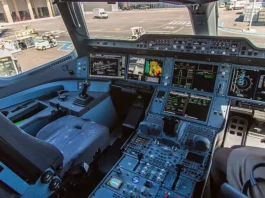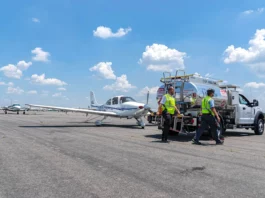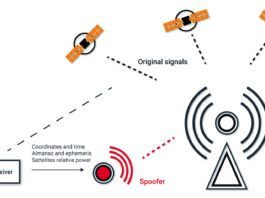Briefing: July 2015
More than 4400 comments were filed in response to the FAAs proposed rule for allowing small unmanned aircraft into the national airspace system, and the general aviation advocacy groups had their say. EAA, AOPA, and the General Aviation Manufacturers Association all said the FAA should lower the ceiling for small UAS operations to 400 feet, instead of the proposed 500 feet, to provide a bigger buffer between UAS and manned aircraft. Other suggestions included requiring UAS to automatically terminate flight if communications are lost, and ensuring that the operators of manned aircraft arent required to add new equipment as a result of UAS integration. The FAA will now review the comments before publishing a final rule, which is expected to take up to 18 months.
Briefing: June 2015
Aero Friedrichshafen, the biggest general-aviation event in Europe, opened in April with the delivery of an EASA type certificate to Diamond Aircraft for its twin-engine DA62. CEO Christian Dries said FAA certification should follow by early next year. Other news was the first flight of a four-seat C4 prototype from Flight Design, just a few days before the show, and Pipistrels introduction of the Alpha Electro battery-powered trainer, ready for sale. At Sun n Fun, in Lakeland, Florida, Piper debuted three new M-class models--the M350 piston and M500 and M600 turboprops--and Mooney brought a mockup of its new all-composite M10T three-seat trainer.
Briefing: May 2015
The first civilian tiltrotor aircraft is now in development and could reach the market by 2017, officials from AgustaWestland announced at Helicopter Association Internationals Heli-Expo held in Orlando, Florida, in March. The nine-passenger aircraft will be capable of vertical take-offs and landings, and the engines will then swivel for level flight at speeds up to 250 knots. Airbus Helicopters presented its new clean-sheet medium-class rotorcraft design, the H160, which features the biggest-ever shrouded tail rotor and an all-new biplane stabilizer design that the company says will enhance stability. Bell Helicopter also introduced a new model, the 407GXP, an upgrade of its popular 407GX with new Rolls-Royce engines.
Briefing: June 2010
Efforts from companies like Swift Fuel and GAMI to find a replacement for 100LL may get some more serious attention now that the EPA has released its advance notice of proposed rulemaking regarding the need to eliminate lead from fuel. Converting in-use aircraft/engines to operate on unleaded aviation gasoline would be a significant logistical challenge, and in some cases a technical challenge as well, the EPA said. The EPA also acknowledged that a joint effort with the FAA will be critical and has not set a date for the rulemaking, but said it would like to see leaded fuel phased out as early as 2017.
Briefing: May 2010
The National Air Traffic Controllers Association honored controllers who helped bring broken aircraft and struggling pilots home. Winners of this years Archie awards included a team of South Florida air traffic controllers who helped a non-pilot land a King Air after the pilot died and a Kansas City controller who helped a Frontier Airlines crew return to the airport safely after a bird strike. The live ATC tapes are available at www.natca.org/mediacenter/Archie2010_Audio.msp.
Briefing: April 2015
The FAA published its proposed rules for integrating unmanned aerial systems into the national airspace in February and drew a mixed reaction. The rules, which will apply to drones weighing up to 55 pounds used for commercial purposes, were less restrictive than many expected, but still would not allow some key technologies. For example, Amazons proposed delivery drones, which would operate autonomously or by remote control, are not allowed under the proposal-the FAA said drones can only be flown within sight of the operator. However, many uses, such as search-and-rescue, crop monitoring, and aerial photography, would be possible under the proposal, which is open for public comments until mid-April.
Briefing: March 2015
Diamond Aircrafts single-engine turboprop prototype completed its maiden flight in January, in Austria. The DA50-JP7 seats seven and is powered by a fuel-efficient Ukrainian-built 465 hp AI-450S engine. Diamond plans to also offer a Tundra version of the aircraft, featuring beefed-up wheels and landing gear. Certification is expected in the second half of 2016. Also in January, Nextant Aerospace announced the first test flight of its remanufactured G90XT design. The project, which launched about a year ago, matches a refurbished King Air C90A with the new GE H75 engine, a Garmin G1000 cockpit, electronic engine controls, dual-zone air conditioning, and many more upgrades. Certification and first delivery are expected in the second quarter of this year.
Briefing: April 2010
The AOPA Air Safety Foundations annual Nall Report found an increase in accidents involving amateur-built aircraft. The statistics from 2008 showed the highest rate of fatal accidents and fatalities in 10 years. The 27-percent lethality rate in these accidents was 10 full percentage points higher than that for accidents in type-certificated airplanes, according to the report.
Briefing: February 2015
Solar Impulse, the one-of-a-kind solar-powered aircraft designed to fly around the world, is now in Dubai, where it will launch in March. The aircraft was built and tested in Switzerland. It was then disassembled and flown to Dubai aboard a cargo airplane. Andr Borschberg and Bertrand Piccard, who have led the effort, said they are confident in the aircrafts capability and their own training, and they will take turns as pilot. The expedition is expected to take 25 days of flying, and will be completed in stages over four or five months. Some legs above the Atlantic and Pacific will require five to six days of nonstop solo flight. The aircrafts wings measure about 236 feet across, and carry more than 17,000 solar cells.
Briefing: March 2010
In January, a database update for some Bendix/King KLN and KLX products rendered them unsafe for use under IFR. Jeppesen apparently delivered some bad data to Bendix/King that contained incorrect dynamic magnetic variations for all terminal and en route waypoint records. Bendix/King quickly posted a corrected database and got the word out to customers through about every channel imaginable. Still, its a sobering thought how dependent weve become on data that has a potential, however remote, of being corrupt. As far as we know, no in-flight incidents occurred as a result of the problem.
Briefing: January 2015
The loss of SpaceShipTwo during a test flight in November wont shut down Virgin Galactics space-tourism project, according to CEO Richard Branson. Branson also said he still plans to be aboard the first commercial passenger flight. NTSB staffers said their investigation wont be complete for about a year, but in the first few days after the accident, they found that the aircrafts feather mechanism -- a rotating tail boom intended to slow the aircraft on descent from high altitudes -- was prematurely deployed, and initiated the breakup of the aircraft at about 50,000 feet. Pilot Peter Siebold was injured but survived, and co-pilot Michael Alsbury was killed. A second spaceship is already under construction and is expected to launch in 2015.
Briefing: February 2010
We now have approved technical and operational standards for ADS-B equipment-but dont get too excited. This really means (among other things) that manufacturers can now move forward to develop conforming ADS-B hardware. The FAAs final rule on what will be required for GA equipage to fly in controlled airspace isnt due until April of this year. Compliance isnt required for another decade-provided the system is up and running by then.






